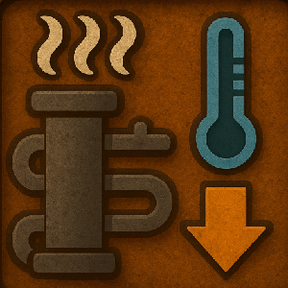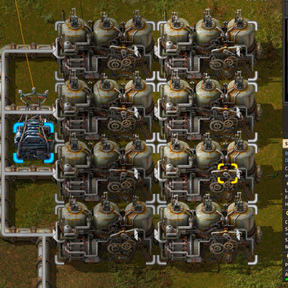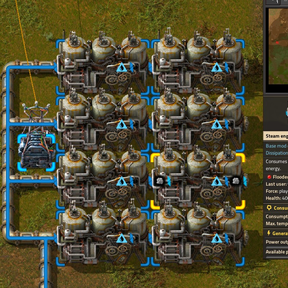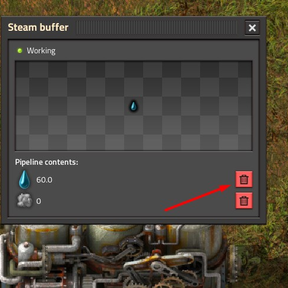Mechanics Overview
Core Principles
- Hotter steam cools faster. Steam at 400°C loses heat significantly quicker than steam at 200°C
- One storage tank equals 40 pipes of heat loss. This may sound expensive, but storing steam in tanks is still more efficient than storing the same total volume in pipes (1 storage tank = 25,000 volume; 1 pipe = 100)
- Heat loss of all other containers scales with volume: (V / 100)^(2/3). Larger vessels retain heat better, but also require more energy to keep their temperature
- Steam in a pipeline heats up only when the boiler injects new portions. If the pipeline is full and nothing consumes steam, it stops heating and cools down
- Low-volume steam cools rapidly
- Steam that cools to 100°C condenses into water. Condensed water can be removed manually "flush water from the pipeline" or pumped out with a pump. The only way to turn water back into steam is by reheating it in boilers
Consequences
- Longer pipelines mean more total heat loss. Each additional pipe slowly drags the average temperature down
- Lower steam temperature reduces power output. Turbines produce less electricity when supplied with cooler steam
- When steam cools and condenses into water, turbines shut down
Factorio Engine Limitations
- All pipes in a pipeline share a single uniform temperature. This is a built-in limitation of the Factorio fluid system
- Fluids mix instantly inside a pipeline. A fresh batch of high-temperature steam injected into a pipeline immediately spreads its heat across the entire segment
- Fast-moving steam cools very little. When turbines pull steam through the pipes quickly, it doesn't have enough time to lose heat — the faster the flow, the less cooling happens
Performance
There are two types of load:
- Pipeline rebuild events. Happens when you build, remove or rotate pipes or fluid-related buildings. Cost depends only on the number of pipes in that specific continuous pipeline. Runs smoothly for pipelines up to ~1,000 pipes each
- Per-tick cooling simulation. Executed during normal gameplay when nothing fluid-related is being built. Cost scales with the total number of separate pipelines, not total pipe count. Stable performance up to ~1,000 independent pipelines.





